 "SBA Thanks You For All The Fish" (santabarbarianlsx)
"SBA Thanks You For All The Fish" (santabarbarianlsx)
07/04/2020 at 20:24 • Filed to: None
 0
0
 9
9
 "SBA Thanks You For All The Fish" (santabarbarianlsx)
"SBA Thanks You For All The Fish" (santabarbarianlsx)
07/04/2020 at 20:24 • Filed to: None |  0 0
|  9 9 |
Ok, so I had another set of lug nuts fuse themselves to the GM lug bolts at the sub-molecular level. Results shown here. Stock nuts and original hub lug bolts this time.
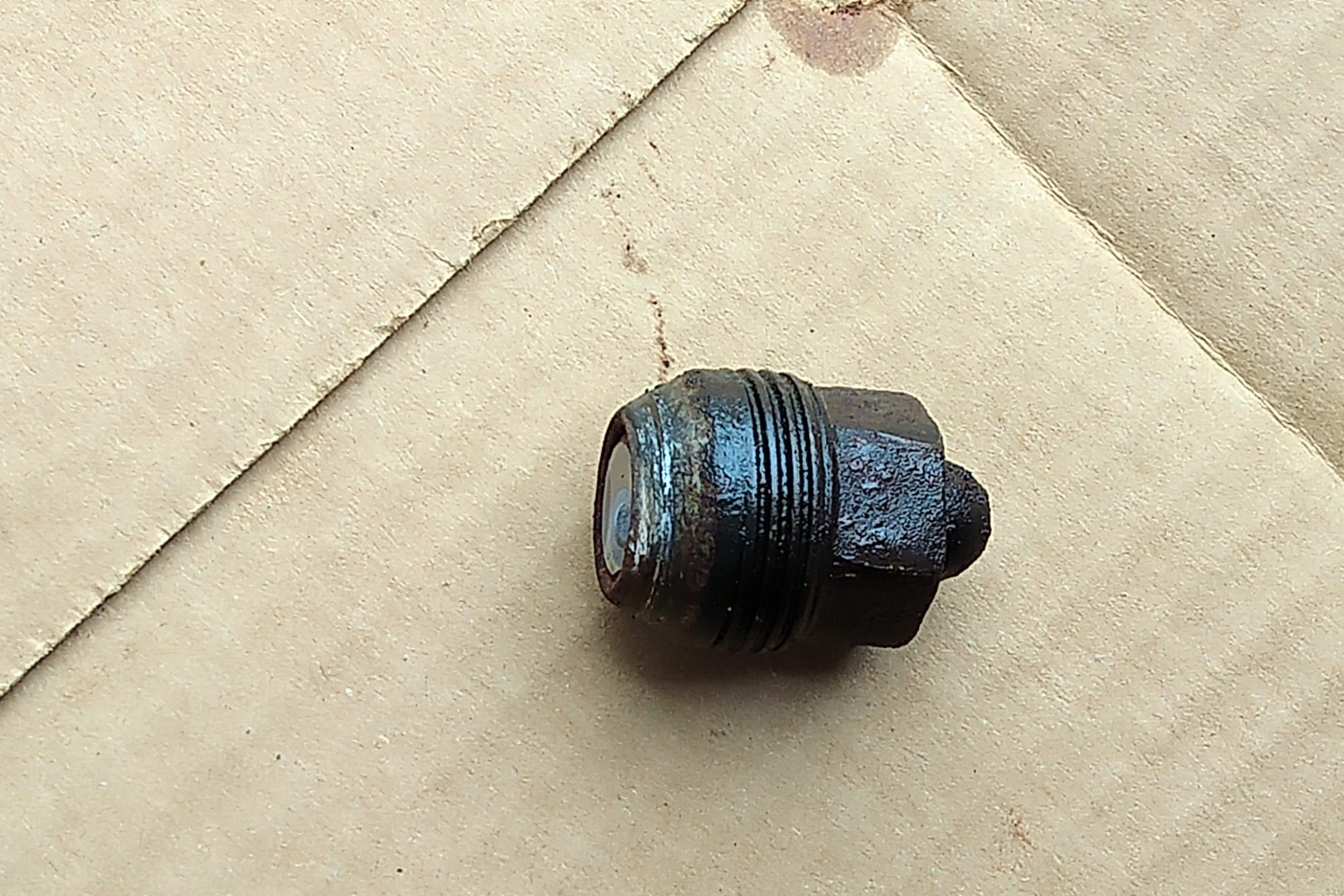
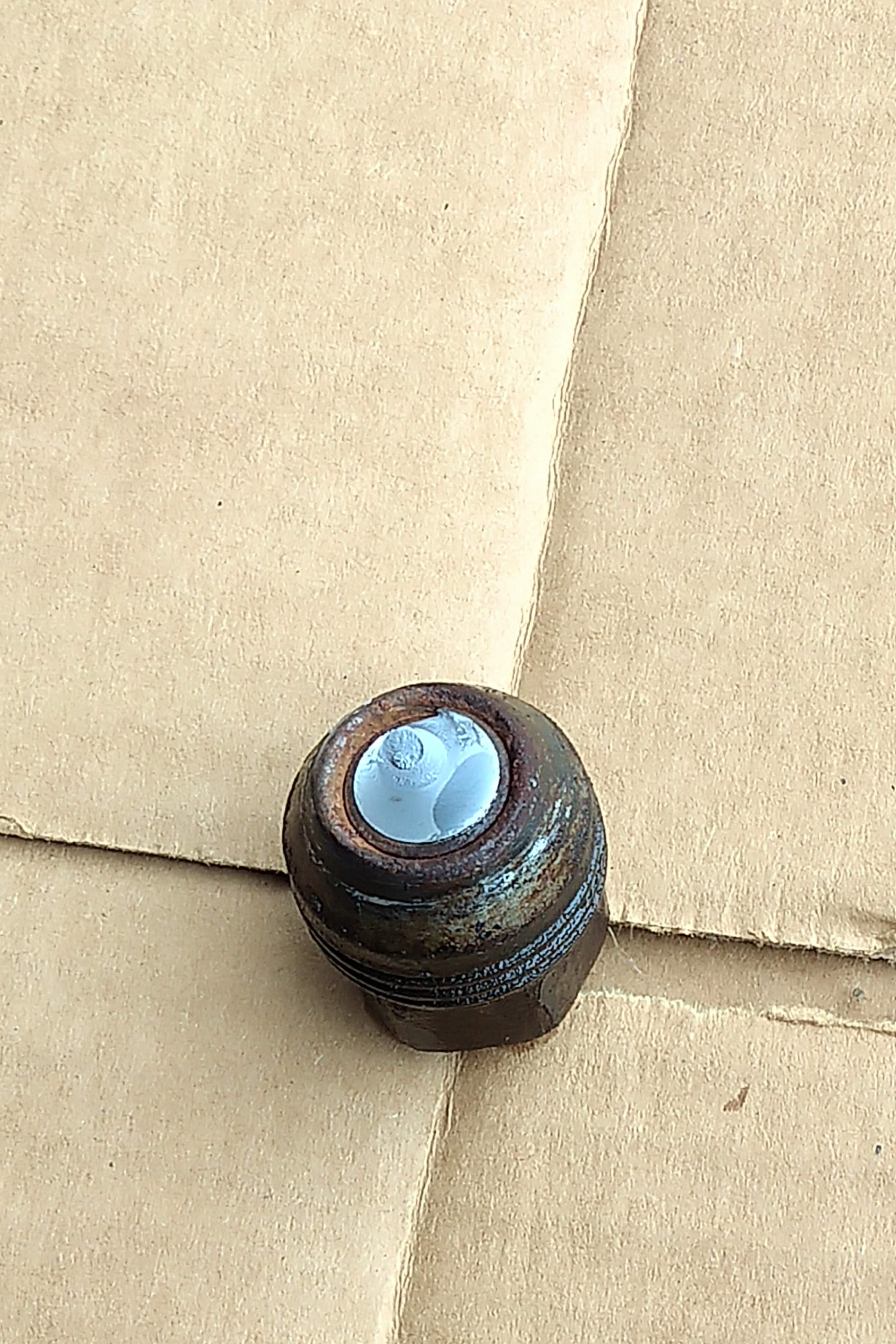
This gave my a GM K2500 series an 8-bolt to 6-bolt conversion without the pesky hub adapter rings..
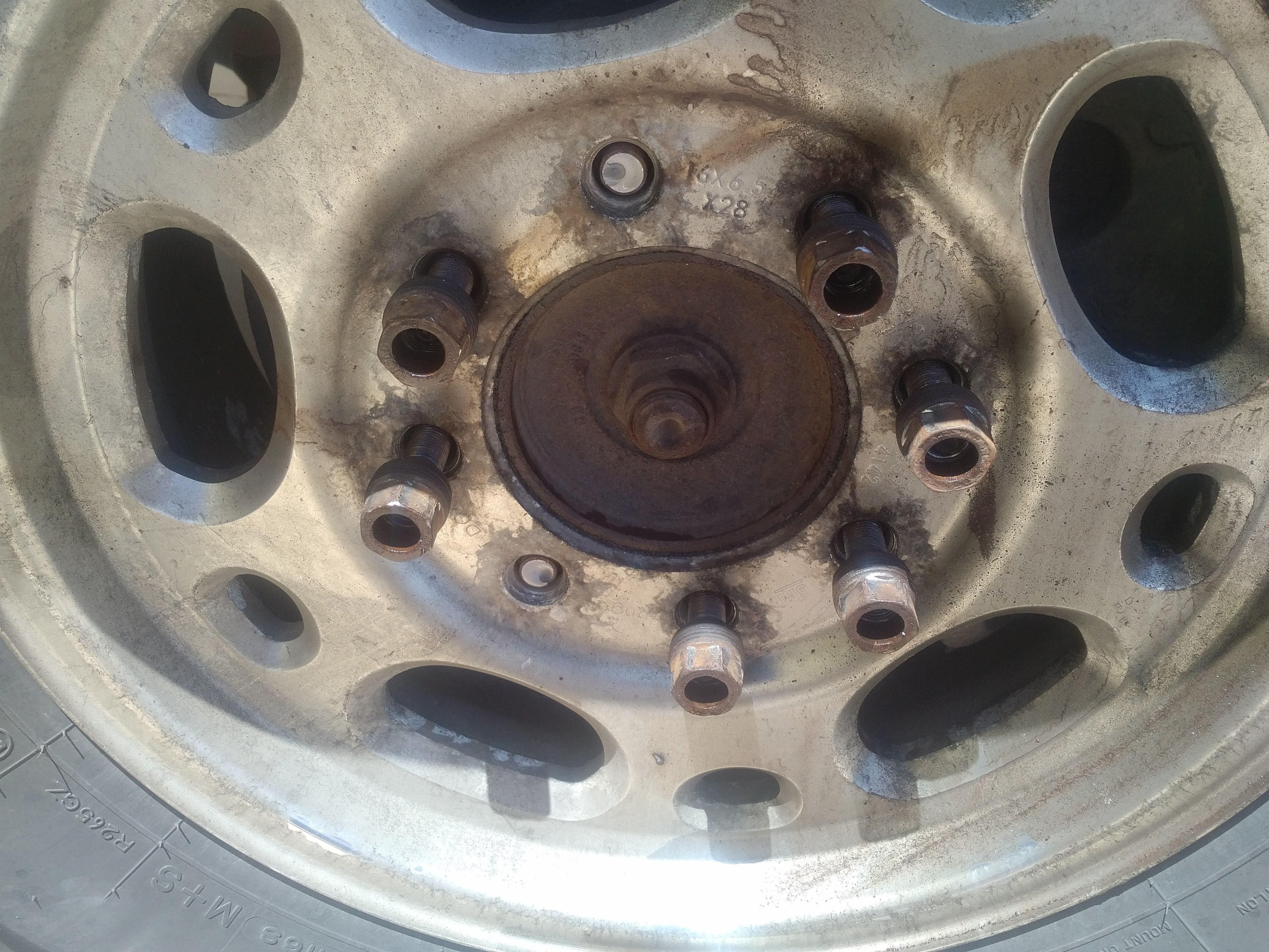
Two winters in the Maryland “road de-icer with new improved sulfuric acid additives” really did a number on these hubs. I “think” part of the issue is more adhesion in the wheel acorn seats due to the dissimilar metals in the aluminum alloy wheels and the mild steel lug nuts. They seem to have more stiction- even before the nuts corroded onto the studs.
So, anyone that wants to preach the “never ever put any thread treatment on wheel studs” gospel will need to preach pretty hard with me. It’s not a hard job to replace studs, but the hubs, rotors and calipers all need to come off. It’s just a pain in the neck.
On the other side of it? I discovered that a sufficiently low-power impact wrench will in fact not twist them off— but with enough Penetrating Oil and patience, can convince the stubborn nuts to dislodge from the acorn seat in the Eastern European alloy wheel. The remaining 6 all let go after a few minutes each of Harbor Freight Impact Tool gentle persuasion — after, of course, I got the truck back to the shop with better tools. One twist of the Breaker Bar and 22mm Heavy Duty socket had been enough to spin the broken studs on the first two— which fostered a serious “Oh, Krap” moment .
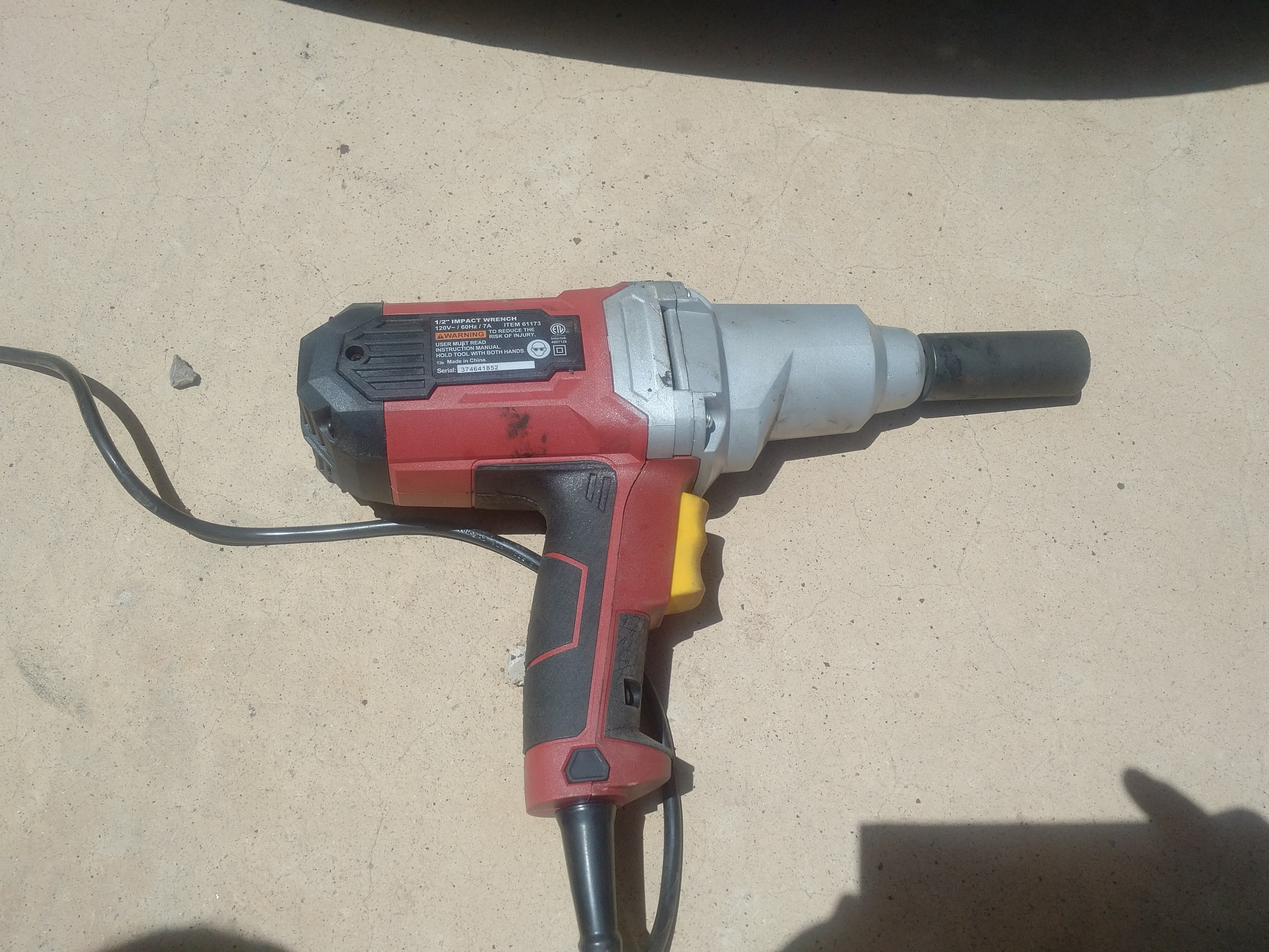
So, I’ll say the electric impact wrench made life a lot easier in the shop once again.
Your Mileage May Vary
 VincentMalamute-Kim
> SBA Thanks You For All The Fish
VincentMalamute-Kim
> SBA Thanks You For All The Fish
07/04/2020 at 20:48 |
|
One thing impact wrenches do for seized fasteners is that the impacts microscopically loosen the seized junction to let the penetrating oil in. Similar to applying the oil and then manual hammering. Just more effective.
You can use blue threadlock - keeps the moisture and air out. You can use anti-seize; just have to decrease the torque values to compensate.
 Nick Has an Exocet
> SBA Thanks You For All The Fish
Nick Has an Exocet
> SBA Thanks You For All The Fish
07/04/2020 at 20:51 |
|
If your threads are rusting, it seems like there’s probably some serious air gaps for water and salt to get in. I wonder if an RTV or liquid rubber would work to keep moisture out?
 Urambo Tauro
> SBA Thanks You For All The Fish
Urambo Tauro
> SBA Thanks You For All The Fish
07/04/2020 at 21:30 |
|
I think the issue is not so much about the dissimilar metals, as it is the exposed lug studs. Are you missing your OE hub covers? They’re not just cosmetic; they’re supposed to attach to those external threads on your lug nuts and help keep salt and crap from attacking the studs where they meet the nuts.
Another option would be closed- en d lug nuts...
 SBA Thanks You For All The Fish
> Urambo Tauro
SBA Thanks You For All The Fish
> Urambo Tauro
07/04/2020 at 23:25 |
|
I hadn’t thought about that. the stock caps do screw onto the ends of the studs... but they are just loose fitting cheesy plastic. You raise a good point that they could seal a bit of the gunk out of there. My recollection of those caps in serious winter weather is that you do accumulate a lot of grime, dirt and crap under the cap.
Sealed nuts might be the answer if I ever take one of these back to lousy winter weather country.
I’m convinced there’s something going on with the steel acorn nut-seat into the softer alloy wheel. Note the clear “galling” of what’s looking like streaks of aluminum alloy into the acorn seat face of the nut. I think they somehow “bond” a bit in these corrosive conditions... theory anyway. But, clear silver streaks in here.

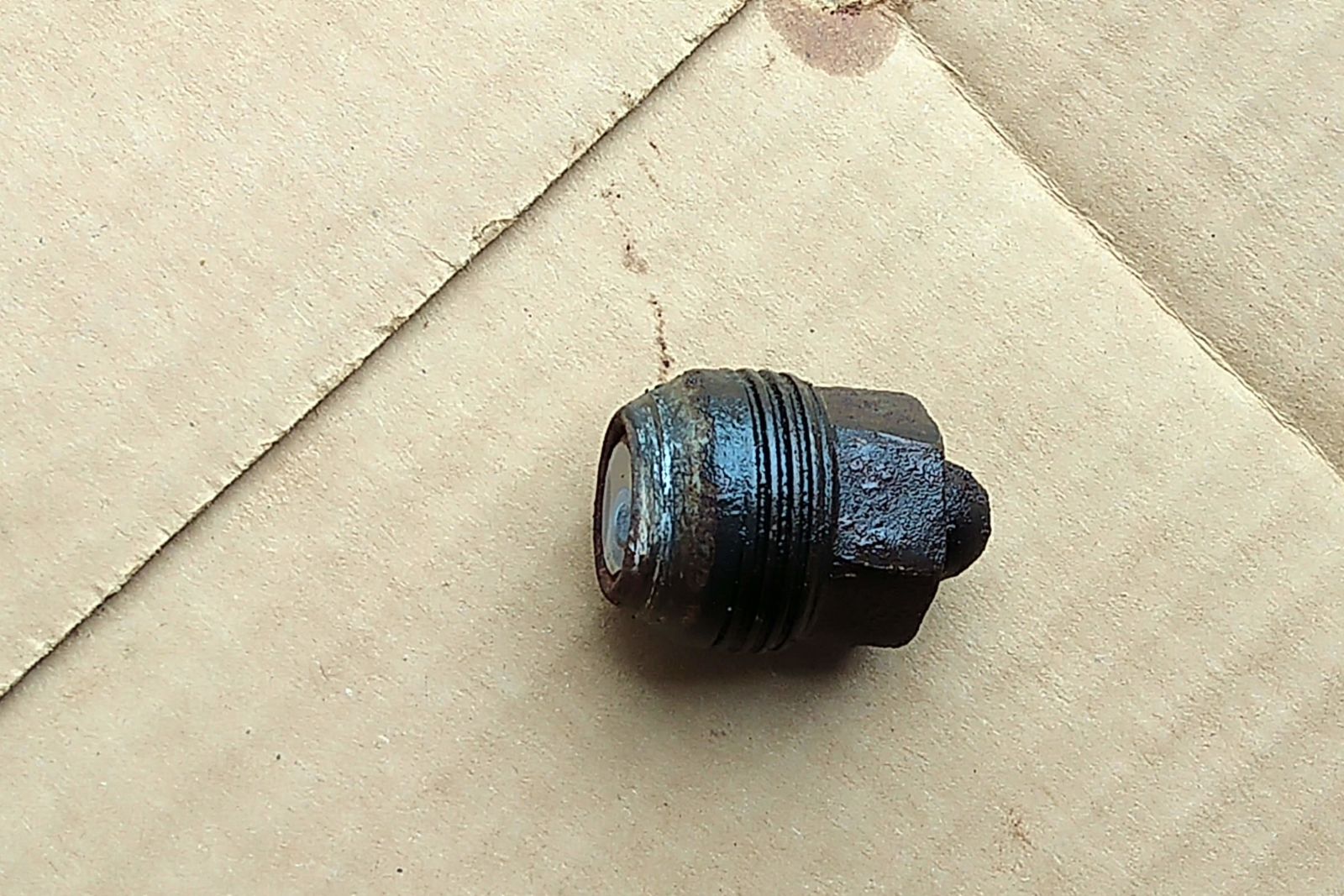

 SBA Thanks You For All The Fish
> Nick Has an Exocet
SBA Thanks You For All The Fish
> Nick Has an Exocet
07/04/2020 at 23:30 |
|
I’d probably do the “weakest” thread locker— definitely will block the moisture intrusion— which is evident across the entirety of the thread section. Even after “breaking loose” they were still miserable to back all the way out.
I think you’re right-- the threads just seem to let the worst of the low-pH moisture in there. They really, really seized up.
 SBA Thanks You For All The Fish
> VincentMalamute-Kim
SBA Thanks You For All The Fish
> VincentMalamute-Kim
07/04/2020 at 23:33 |
|
Yeah, I’m a dumbass for not considering that an impact tool might break them loose more gently— that will be my standard MO going forward if I think I have corrosion.
A couple of those I had to pound on easily for two minutes-- I figured they’d never let go-- but they eventually gave it up. Obviously wish I’d had that counsel before I eff’d up the first two . Oh well, time to pull the calipers and check pad wear anyway...
 Urambo Tauro
> SBA Thanks You For All The Fish
Urambo Tauro
> SBA Thanks You For All The Fish
07/05/2020 at 00:16 |
|
Yeah I see the streaks, but considering the broken studs, the bond that I’m more worried about i s the corrosion between the nut and the stud.
Well-fitting caps do a pretty decent job of keeping contaminants out ( as long as they aren’ t submerged) . However, it’s really easy to strip the plastic threads out, especially if the outer threads on the lug nuts are corroded. That may explain your past experiences with poor fitment and accumulation .
If you still have the original hub covers, the OE-style black plastic nut caps that hold them in place should b e readily available at a local parts store (I think Dorman makes them). Just make sure to clean the threads on any old nuts you’ll be re-using before it chews up the threads on the new caps.
 brianbrannon
> SBA Thanks You For All The Fish
brianbrannon
> SBA Thanks You For All The Fish
07/05/2020 at 14:08 |
|
Anaerobic gasket maker or weak thread lock will prevent rusted threads. Also put the hub caps on
 SBA Thanks You For All The Fish
> brianbrannon
SBA Thanks You For All The Fish
> brianbrannon
07/05/2020 at 15:16 |
|
Thanks, yeah, learning experience here. Those caps always seemed like an annoyance, but may have helped.
I appreciate everybody’s input on this one. This is a recurrent problem...